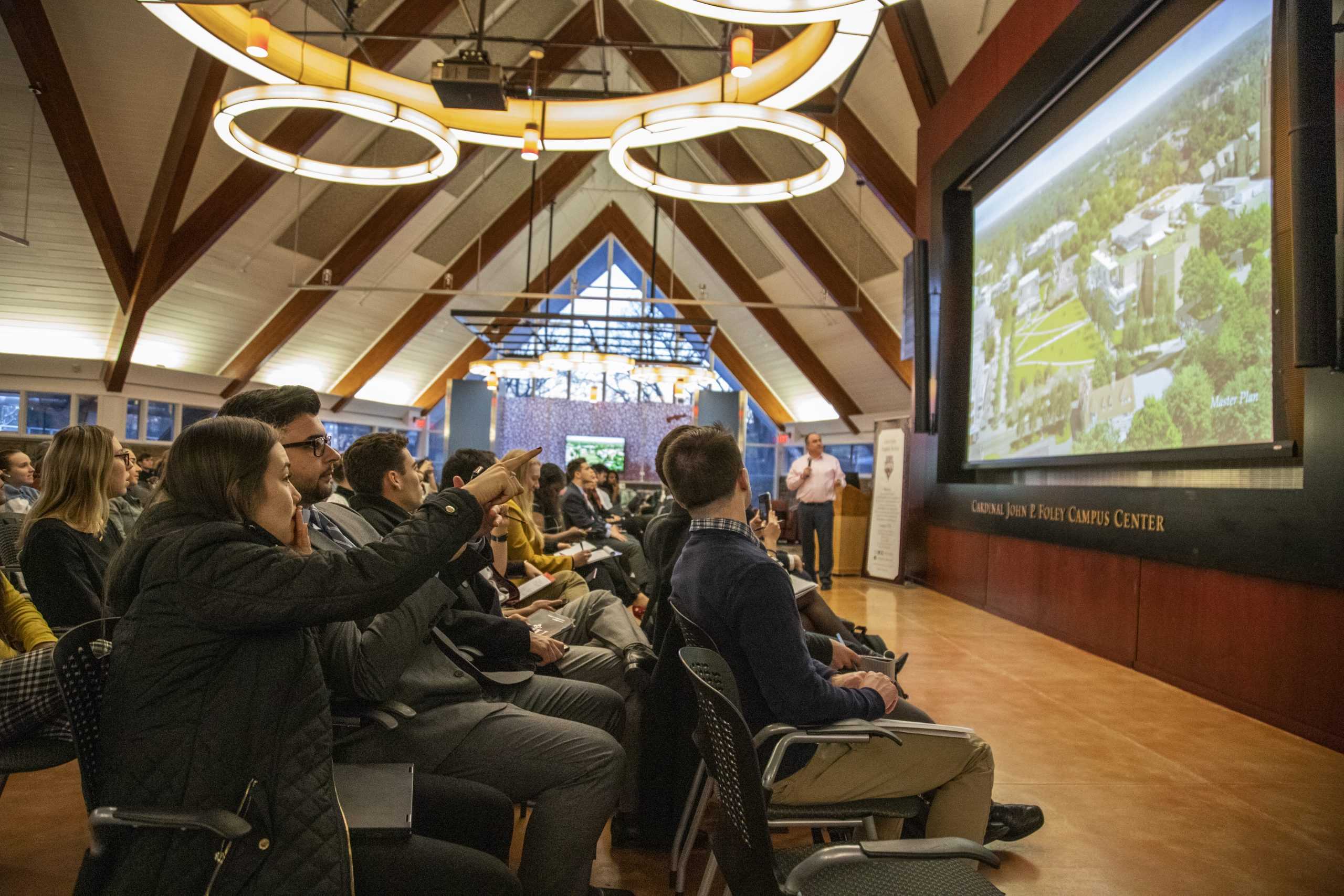The university’s strategic plan remains on track, according to university officials, despite a challenging year due to the coronavirus pandemic and the announcement of a possible merger with the University of the Sciences.
Details of the strategic plan, “Thinking Anew, Acting Anew,” were publicly released to the campus community in March 2019. The resulting Campus Master Plan includes new parking garages and residence halls, a new student center, renovations to O’Pake Recreation Center and other campus buildings, including Bellarmine Hall and the Science Center, an expansion of green spaces, and a City Avenue pedestrian underpass to connect the Philadelphia and Maguire campuses.
“The university remains committed to enhancing and optimizing our campus,” wrote Gabriella Lacherza, public relations manager, in response to written questions from The Hawk, which she attributed to Joseph Kender, vice president for University Relations.
In a 2019 interview with the Hawk after the plan was released, Kender said the university’s strategic initiative was “probably a 10- to 20-year plan.”
That timeline has not changed, Kender said in his recent response, but the plan remains a “conceptual guide” rather than a “precise road map for our campus imprint.”
“Each project has multiple phases,” Kender said. “While some design has been completed, we have not completed any major construction projects associated with the master plan.”
Kender said changes are expected when implementing strategic plans.
“This includes permitting, impact to our community and neighbors, philanthropy, how our needs will evolve over time, unforeseen circumstances like a pandemic and more,” Kender said. “Any one of these elements could accelerate or delay a particular project.”
Robert Gofourth, vice president of Operations Strategy & Performance at BlueCross BlueShield of North Carolina, told the Hawk that adaptability is key for any business trying to plan for the future in the midst of an unprecedented public health crisis. Gofourth will speak to St. Joe’s students March 10 as part of a Spencer Educational Foundation program grant, which connects college students with leaders in the risk management industry.
“Goal planning is actually easier in the near term,” Gofourth said. “Most businesses are committed to 2021 looking a lot like 2020. So, the near term has been fairly easy because we’re giving it the same treatment.”
But Ashok Margam, D.B.A., visiting professor of finance, said there are still challenges for businesses and institutions in setting short- and medium-term goals because of so many uncertainties the pandemic has caused.
“It’s harder to plan for next year because we still do not know when we will come out of the pandemic, when life will be back to pre-COVID,” Margam said. “It’s hard to predict if it will be next year. But if you’re planning for, let’s say, five years later, or 10 years, that probably would be easier.”
Margam said the future successes of higher education institutions depend on the willingness of students to return to the status quo, like traveling to campus, living in residence halls and taking classes in person.
“There is an increasing questioning of the relevance of the traditional campuses, especially in students’ minds and parents’ minds,” Margam said.
Gofourth said keeping donors happy is an important part of the strategic equation.
“You have to get out in front of those donors, you have to seek their opinion,” Gofourth said. “Because you don’t want to lose the ability to ask them for money again.”
On Feb. 10, the university signed a letter of intent to explore a merger with USciences.
Margam said mergers for higher education institutions may become more commonplace as a result of the pandemic in order to maintain relevance and stability under external pressures.
“The smaller institutions will have to be in a survival mode,” Margam said. “I think that’s where we probably will be seeing more and more consolidation in the space, through mergers and acquisitions.”
Kender said it is too early to know how the university’s strategic plan might be impacted by a merger.
“Currently, we are evaluating and confirming whether a combination is in the best interests of both university communities,” Kender said. “It is too early to know if or how the campus master plan might change based on the proposed combination of our universities.”













































